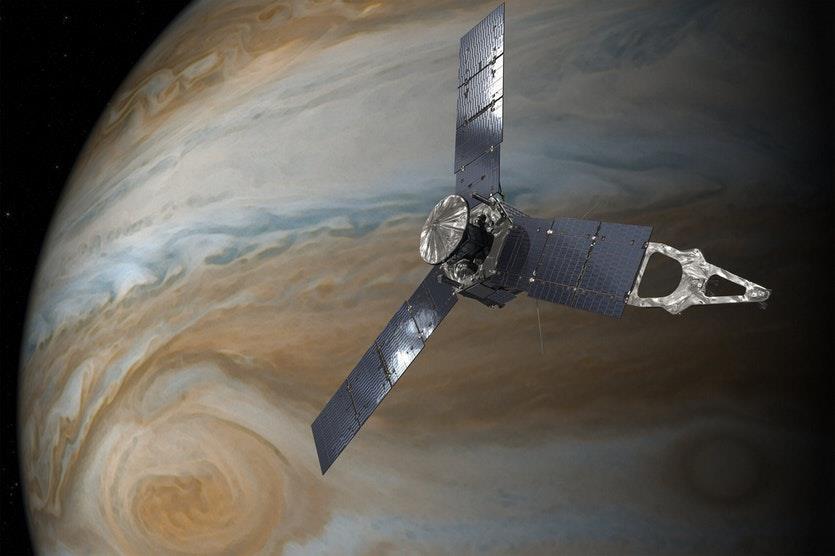LOS ANGELES, Aug. 1 (Xinhua) -- NASA's Juno spacecraft took a detailed image of Jupiter's southern surface in its most recent close flyby, showing a striking contrast of color red and white in the planet's atmosphere.
The view highlights a rich palette of the largest planet in our solar system, featuring the browny South Equatorial Belt, the mostly white Southern Tropical Zone, as well as the rusty red of the anticyclonic storm Great Red Spot, Jupiter's most famous phenomenon.
Kevin M. Gill, a civil software engineer at NASA's Jet Propulsion Laboratory, created the beautiful image, using data from the spacecraft's JunoCam Imager, said the mission team in a Thursday release.
The raw image was taken on July 20 as Juno performed its 21st close flyby of Jupiter. At the time the image was taken, the spacecraft was 42,965 km from the tops of the clouds, above a latitude of 46 degrees south, according to the release.
Juno was launched on Aug. 5, 2011, from Cape Canaveral Air Force Station in the southern U.S. state of Florida, and arrived in orbit around Jupiter on July 4, 2016.
Juno's principal goal is to understand the origin and evolution of Jupiter. Its tasks include looking for a solid planetary core, mapping magnetic fields, measuring water and ammonia, and observing the planet's auroras.





